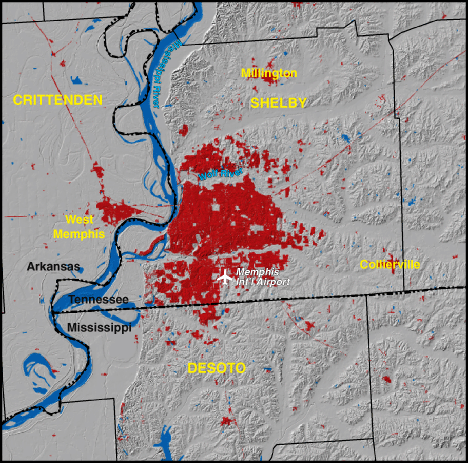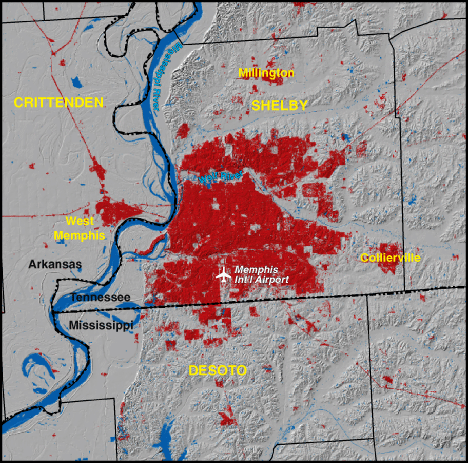Memphis, Tennessee 1973


|
1970 Population - 806,102
Includes Shelby, Crittenden, and DeSoto Counties. NOTE: portions of the above listed counties may not be visible on the map Red areas shown as developed land 99,100 acres (155 square miles) |
Tennessee's "Bluff City" was established in 1819 along the banks of the Mississippi River. Initial growth was slow, but by the 1850s, thriving river commerce transformed it into a fast-growing city. Following the Civil War, Memphis was devastated economically by falling cotton and land prices, and socially by racial tension. The city rebounded, as cotton and lumber industries grew and new railroad lines and bridges extended its trade area. Memphis' population soared to 230,000 by 1930. World War II boosted the city's economy through defense activities, and population growth continued. A construction boom continued into the early 1970s, when overdevelopment caused a collapse in the real estate market and decay of the city center. |
Memphis, Tennessee 1992

|
1990 Population - 944,179
Includes Shelby, Crittenden, and DeSoto Counties. NOTE: portions of the above listed counties may not be visible on the map |
Memphis recovered as its economy expanded with medical services, wholesaling, and transportation, especially the dramatic rise of the air shipping service Federal Express, which has become the area's largest employer. Memphis continues to experience low-density development, especially to the east and southeast, causing another highway beltway to be constructed. The Mississippi River presents obstacles to growth to the west, because its valley bottom is vulnerable to flooding and possible earthquake damage from the nearby New Madrid fault. Other problems include housing shortages, residential segregation, and strained city services. Innovative approaches to land use have alleviated some problems, but Memphians still face challenges to metropolitan growth. |